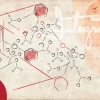
Making sense of the Russian bear metaphor:
The image of a threatened bear distracts us from understanding Russia’s actions
When things get complicated, political metaphors offer a useful explanatory shortcut. The debate about Russia in the West is often formulated as a question about what the “Russian bear” will do next. The use of this metaphor is tacit acknowledgement of the possibility that the Russian bear may turn aggressive and unpredictable when it feels threatened. The power of this metaphor rests upon a simple interpretation of the present-day situation: do not poke the bear, for it may attack you. Although people may not necessarily want to hear this message, it at least conveys an image of the threat that can be understood.
Unlike many other shortcuts to understanding Russia, the use of the bear metaphor is not a Western peculiarity. President Putin has frequently referred to it when explaining Russia’s actions in the course of the crisis in Ukraine, which can now be seen as a war. During his major news conference in December 2014, Putin sought to portray Russia’s defensive posture against the West with reference to a bear protecting his taiga. If only the bear could be left alone, said Putin, but instead, “someone will always try to chain him up”. If that wasn’t enough, Putin continued, once the bear has been chained up, his teeth and claws – the country’s nuclear arsenal – will be ripped out.
This is typical of Putin. Instead of addressing the suggestion that Russia’s economic woes are the price the country has to pay for the Crimean annexation, Putin turned the issue on its head. What is really at stake here, Putin argued, is nothing less than the existence of Russia as a sovereign state. The West wants to have control over Russia, to prevent the country from being what it is: a great power with weapons worthy of this status and access to all valuable resources. The image of a chained and tormented Russian bear is a powerful tool for driving this argument home to the domestic audience.
But the real question is how long this rhetoric will allow Putin, even in the domestic context, to avoid answering the difficult questions. The Russian economy is expected to stagnate even further, a situation which is aggravating the process of distributing existing resources between different sectors of the economy, and most importantly, between the groups that were given access to these resources. Furthermore, it is unclear whether the Kremlin wants, or is even able, to address the systemic corruption that is hindering attempts to transform Russia from a resource-extraction model to an innovative economy, and bringing basic societal services and institutions to a standstill. This situation may not pose an imminent threat to the Kremlin, but it clearly means that the regime’s capacity “to weather shocks and challenges becomes increasingly limited”, as was recently argued by Mark Galeotti, a professor of global affairs at New York University.
What is more, it is not evident whether the Russian leadership understands the nature of this vulnerability. Part of the problem is that, by and large, the official rhetoric conveys visions based on the negation of what Russia is not and where it does not belong. Sergei Glazyev, founding member of the nationalist Izborsk Club and someone who has a reputation for being President Putin’s advisor in economic affairs, has been vocal in expressing the policy of negation.
Glazyev argues that Russia should sever ties with Western-originated financial institutions and other international organizations and create an ‘anti-war’ coalition instead, with Russia as its leader. The coalition is targeted first and foremost against the United States, which, according to Glazyev, is backing the war in Ukraine with the clear aim of attacking Russia. Thus, the purpose of the ‘anti-war’ coalition is to defend Russia against foreign aggression.
The set of actions suggested by Glazyev, and required to create the anti-war coalition, resembles the “active measures” of the Andropov era. The notion of active measures referred to overt and covert techniques aimed at influencing foreign countries and intended to weaken the enemy and consequently create favourable conditions for the expansion and consolidation of Soviet power. The generic narratives employed for this purpose included portraying the opponent in aggressive and militaristic terms, poking fun at apparent weaknesses within the West, and exploiting these weak links to undermine the general Western solidarity. These tactics were an integrated part of Soviet foreign policy conduct during the 1950s, and seem to have made a comeback.
By using these techniques, Russia aspires to circumvent serious dialogue on the causes and consequences of the war in Ukraine. Instead, it seeks to divert attention towards broader issues like the European security architecture and the creation of an integrated trade area between the EU and the Eurasian Economic Community.
When approached from this perspective, using the bear metaphor can be interpreted as one form of distraction. When used in the Russian context, the metaphor deflects attention away from systemic vulnerabilities and portrays an image of a country that is acting in self-defence. In the Western context, the metaphor naturalizes the threat into something that can be interpreted through observation of the habits, instincts and movements of a bear. Perhaps paradoxically, with the use of this metaphor, Russian actions are explained away as being reactive to those of others.
To understand the systemic crisis in Russia and what it is doing to Russian national interests, we need to come up with a new metaphor. Something that pierces the core of the problems rather than tries to package them so neatly.

Bild: Tuukka Niemi/FIIA







